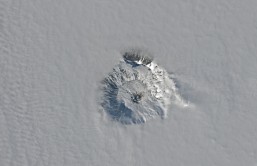A fragment of Zircon discovered on a sheep ranch in Western Australia is said to be the "oldest known piece of Earth" and is about 4.4 billion years old.
The piece of gem was extracted from a rock outcrop in Australia's Jack Hills region in 2001. Researchers from the University of Wisconsin used two different age-determining techniques to get the accurate age of the tiny zircon crystal. First, they used a widely accepted technique based on radioactive decay of uranium to lead in the mineral sample. The results revealed that the gem was 4.4 billion years old. To confirm the findings, they turned to a second novel technique known as atom-probe tomography, where each atom of lead in the crystal was identified and then measured for its mass. The findings of the second technique confirmed that the zircon fragment was indeed that old.
"We've proved that the chemical record inside these zircons is trustworthy," said John Valley, lead study author and a geochemist at the University of Wisconsin, according to Live Science.
The Earth was formed 4.5 billion years ago but remained a molten ball of rock for the first part of its early days. Hundred million years later, the planet's crust formed. It was only after the crust's formation that minerals like zircon came to exist on the planet. Until then, life didn't exist on Earth. This era was known as the "Hadean" period, named after Hades, the Greek god of the underworld.
The discovery of this "oldest known piece of Earth" confirmed that the Earth's crust formed earlier than previously believed, approximately 160 million years after the solar system formed. Trace elements in the oldest zircons from Australia's Jack Hills range suggest they came from water-rich, granite-like rocks such as granodiorite or tonalite, other studies have reported. This discovery supports the notion of a "cooler Earth." Scientists believe that the Earth was capable of sustaining life earlier than previously thought because temperatures were low enough to sustain oceans.
Zircons are one of the toughest minerals on the planet. They formed 165 million years after the Earth's formation and have survived many eras that the Earth underwent. They are known as "the most reliable natural chronometer" available to look at early Earth history. The mineral contains uranium, which allows scientists to date it relatively precisely.
Uranium radioactively decays to lead at a steady rate. Counting the number of lead isotopes is how scientists date the crystals. However, as more lead atoms are formed, alpha particles are released, which may damage the crystal, hampering the age-determination process.
"If there's a process by where lead can move from one part of the crystal to another place, then the place where lead is concentrated will have an older apparent age and the place from where it moves will have a younger apparent age," Valley said.
Valley and his colleagues faced a similar dilemma when they previously used uranium-lead radioactive dating to determine the age of a zircon crystal sample named 01JH36-69, which was found 15 years ago in metamorphosed sandstone at Jack Hills.
However, Valley confirmed that in this new case, even if the zircons suffered radiation damage, the lead atoms stayed in place. Therefore, the age of the crystal was accurately determined.
"This careful piece of work should settle the debate because it shows that indeed there is some mobility of lead, which was hypothesized to result in dates that were too old, but the scale of mobility is nanometers," said Samuel Bowring, a geochemist at MIT, who was not involved in the study, according to Reuters. "Even the smallest volumes analyzed with the ion probe average out the heterogeneities, or variations within the zircon."
The newly discovered zircon crystal measures only about 200 by 400 microns, about twice the diameter of a human hair. The discovery has led researchers to speculate that perhaps Earth was capable of sustaining microbial life 4.3 billion years ago.
"We have no evidence that life existed then. We have no evidence that it didn't. But there is no reason why life could not have existed on Earth 4.3 billion years ago," Valley added.
The oldest fossil records of life are stromatolites produced by an archaic form of bacteria from about 3.4 billion years ago.
Findings of the new study were published in the journal Nature Geoscience.








